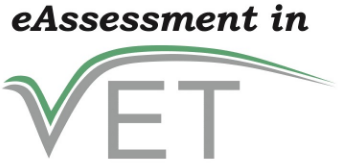-
Covid-19
-
Introduction
-
Issues and Barriers
-
Pedagogy
-
Feedback
-
Approaches
-
Continuing Professional Development
-
Organising
-
Glossary
- All Glossary
- automation in education
- blog
- cloud computing
- content management system
- e-portfolio
- eAssessment
- edtech
- forum
- H5P
- Individualise in education
- LMS platform
- Moodle
- open-source software
- references
- resource facilitation
- rubric
- Validity
- video streaming
- virtual classroom
- virtual room
- vlog
- VoIP
- wiki
- Show All Articles9 Collapse Articles
-
Creative Commons
-
Tools
- Aha Slides
- Backchannel Chat
- Coggle
- Conceptboard
- Formative
- FreshGrade
- Getcrossword
- Google Forms
- Kahoot!
- medQuizz
- Mentimeter
- Moodle
- Nearpod
- Padlet
- Poll Everywhere
- Quizlet
- Quizziz
- Seesaw
- Socrative
- Trello
- Typeform
- Wordwall
- Show All Articles7 Collapse Articles
-
Português
-
- AhaSlides
- Backchannel Chat
- Conceptboard
- Coggle
- Formative
- FreshGrade
- Getcrossword
- Google Forms
- Kahoot!
- medQuizz
- Mentimeter
- Moodle
- Nearpod
- Padlet
- Poll Everywhere
- Quizlet
- Quizziz
- Seesaw
- Socrative
- Typeform
- Wordwall
- Trello
- Show All Articles7 Collapse Articles
-
Scenarios
Why eAssessment
There are increasing pressures driving the introduction of eAssessment from an operational perspective. One is simply the imperative to improve reliability of operational and assessment processes. Increased demand for quicker end to end services conflicts with the decreasing availability of ‘expert assessment personne.’1
eAssessment is seen as cheaper and more easily scalable than traditional assessment, while at the same time there is an increasing availability of technology options and solutions.
Importantly, eAssessment has more efficient assessment moderation processes – including through cloud computing, wikis and document sharing to facilitate exchange of materials between assessors with a big driver being the perceived improved consistency and speed in processing assessment evidence through combining human and computer marking. Cloud computing can be used to store and retrieve evidence.
However, perhaps the most cited advantage of the use of technology for assessment, at least from an operational point of view, is that it reduces the volume of work for assessors. This may be especially salient for vocational education and training which has always been less reliant on external assessors and markers and thereby more dependent on teachers and trainers, for whom it forms part of their job.
With a growing appreciation of the importance of formative assessment in vocational education and training, eAssessment offers the promise of both scaling the frequency and volume of assessment and providing rapid feedback to learners.
1 National Quality Council (2011) E assessment guidelines for the VET sector, Australian Government Department of Education, Employment and Workplace Relations, https://www.voced.edu.au/content/ngv%3A46939
